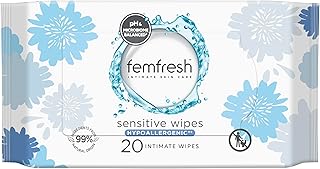The women’s intimate care market in Korea is experiencing significant growth, with an estimated valuation of USD 1.6 billion in 2025. This industry is projected to continue expanding at a 4.4% CAGR, reaching USD 2.5 billion by 2035. The growth is driven by a combination of social, cultural, and demographic shifts that are reshaping consumer attitudes towards health and wellness.
In the past, intimate hygiene was a taboo subject in many Asian countries, including South Korea. However, there has been a notable shift towards openness and awareness regarding women’s health and self-care. This change has led to an increased demand for products designed to enhance intimate wellness, such as cleansers, wipes, moisturizers, and pH-balancing solutions tailored for sensitive areas.
The aging population in Korea is also contributing to the growth of the intimate care market. Hormonal changes, particularly during menopause, can lead to issues like vaginal dryness and irritation, driving the need for products that provide comfort, hydration, and hygiene for older women. Additionally, the trend towards preventive healthcare and holistic wellness is influencing consumer behavior, with many incorporating intimate care into their skincare routines.
The beauty and personal care industry in Korea offers a fertile ground for innovation, with a growing emphasis on premium products that prioritize quality and safety. Brands that promote natural ingredients, probiotics, and fragrance-free formulations are gaining popularity as consumers become more conscious of product safety and skin-friendly options.
Digital platforms and social media play a crucial role in educating consumers and enabling them to make informed decisions about intimate care products. This intersection of education, aging populations, wellness trends, and digital access is driving consistent growth in the women’s intimate care industry in Korea.
The industry is witnessing divergent trends across different age groups, with younger consumers gravitating towards natural, gentle ingredients and sustainable products. On the other hand, older women prioritize comfort and health, seeking medically approved, fragrance-free options. Personalization is a key trend across all segments, with a focus on education, safety, and overall well-being driving brand loyalty and product demand.
Looking ahead to 2035, the women’s intimate care market is expected to evolve further, with a greater emphasis on customized and integrative health solutions. Advanced product formulations addressing age-related issues, hormonal fluctuations, and lifestyle factors will be in high demand. Sustainability will remain a key trend, with consumers expecting eco-friendly packaging and ethical sourcing practices from brands.
While the industry is poised for growth, it also faces risks related to regulation, consumer education, and market saturation. Firms will need to stay agile and responsive to changing regulations and consumer preferences to maintain their competitive edge in this dynamic market.
Leading companies in the Korean women’s intimate care market include Procter & Gamble, Johnson & Johnson, Hindustan Unilever Limited, Redcliffe Hygiene Private Limited, SANFE.IN, Joylux Inc., and QUEEN V. These companies are driving innovation, quality, and competitiveness to meet the evolving demands of consumers for effective, high-quality intimate care products.
📰 Related Articles
- Western Europe Women’s Intimate Care Market Trends Towards Personalization
- Vagiceuticals and Intimate Care: Empowering Women’s Wellness Revolution
- Global Women’s Sneakers Market Booms: Fashion Meets Functionality
- UK Women’s Footwear Market Set for Decade of Growth
- Tea-based Skincare Market Booms, Set to Reach $3.8B by 2035






